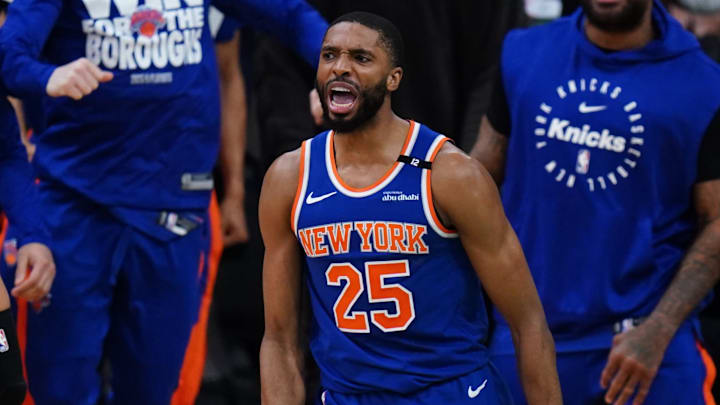If you think Mikal Bridges’ $150 million extension is an overpay or exposes the New York Knicks to serious risk, consider this: He could have been waaaaay more expensive had he reached unrestricted free agency in 2026—to the tune of $200 million, or potentially much more.
For the time being, Bridges’ max extension was capped at four years and $156.2 million. Next summer, his deal could have cost more per season and/or run for longer. Assuming the salary cap rises by 7 percent for 2026-27, like it did for 2025-26, here is where Bridges’ various max deals could’ve landed:
- Four-year max with the Knicks: $222.4 million
- Five-year max with the Knicks: $287.9 million
- Four-year max with another team: $213.5 million
It isn’t clear whether Bridges would have the leverage necessary to bag the absolute max on the open market. As it stands, he accepted less than his current top value to sign an extension that exposes him to a midseason trade. There is virtually no chance New York would have needed to throw a five-year max his way next summer.
Still, circumstances change.
The Knicks would have faced stiff competition for Mikal Bridges in 2026
Contrary to this summer, when the Brooklyn Nets were the only organization with major spending power at the start of free agency, a handful of squads have the ability to dredge up over $40 million in space next offseason. Even after ruling out teams unlikely to pursue Bridges (i.e. Brooklyn itself), more than a couple of suitors could’ve easily talked themselves into going after him.
This prospective list includes the Chicago Bulls, Los Angeles Lakers, Utah Jazz, and Washington Wizards. Depending on what happens with their own free agents, you could add the Detroit Pistons and Miami Heat, too.
Whether any of these teams would’ve tossed Bridges a four-year, $213.5 million deal is debatable. But that’s part of the point. It could have happened. Especially when looking at how light on talent the 2026 free-agency class will be. If another team went that high, the best-case scenario for the Knicks would have been keeping Bridges on the exact same terms—which would have cost them an additional $63.5 million than they’re slated to pay him now, an average of nearly $16 extra million per year.
What’s more, this assumes he would have simply returned for what the rest of the market offered. In reality, this could have turned into an OG Anunoby-esque situation. The Knicks knew he could sign a four-year max with another team, so they included a fifth season to lock him up at a sub-max rate, but for more total money.
A five-year deal worth $225 to $250 million would not have been out of the question for Bridges if he had standing four-year maxes elsewhere. Not only would the Knicks have been on the hook for an additional $75 to $100 million in committed money, but tacking on the extra season would’ve meant paying him through his age-34 campaign, a separate risk unto itself.
Of course, Bridges’ current extension is not without risk. Last season was a roller coaster. But letting him leave was never an option, and the Knicks were never going to recoup as much value for him in a trade. So while $150 million seems like a lot now, New York just dodged a far more expensive, far more dangerous, scenario by getting a deal done now.
